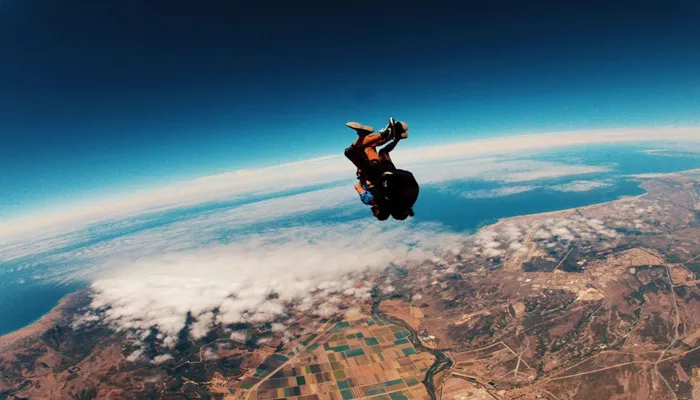Skydiving is one of the most thrilling extreme sports in the world. The sensation of jumping out of an airplane and falling through the sky is unlike anything else. One of the most exciting parts of skydiving is the free fall—the time between exiting the aircraft and opening the parachute. But how long does this free fall last? This article will explain in detail what free fall is, how long it typically lasts, and the factors that influence its duration.
What Is Free Fall in Skydiving?
Free fall in skydiving refers to the period when a skydiver is falling through the air without the parachute deployed. Technically, in physics, free fall means falling under the influence of gravity alone, with no other forces acting. However, in skydiving, air resistance plays a big role, so it is not a pure free fall in the scientific sense. Still, the term “free fall” is used to describe the thrilling part of a skydive before the parachute opens.
When a skydiver exits the plane, they accelerate due to gravity. Within about 10 seconds, they reach terminal velocity—the fastest speed they will fall—because air resistance balances the force of gravity. For a typical belly-to-earth position, terminal velocity is around 120 miles per hour (about 193 kilometers per hour).
Typical Duration of Free Fall
The length of free fall during a skydive depends mainly on the altitude from which the jump is made. Here are some common figures based on jump altitudes:
From 8,000 feet: about 30 seconds of free fall
From 10,000 feet: approximately 30 to 45 seconds
From 12,500 to 13,500 feet: around 45 to 60 seconds
From 15,000 feet: roughly 60 to 70 seconds
Most recreational skydives occur between 10,000 and 14,000 feet, giving jumpers about 40 to 60 seconds of free fall time.
Tandem skydivers, who jump attached to an instructor, usually experience free fall closer to 50 seconds, while solo jumpers may enjoy up to 60 seconds or more.
What Happens During Free Fall?
Once you exit the aircraft, you rapidly accelerate until reaching terminal velocity. At this point, you fall at a steady speed because the upward force of air resistance equals the downward pull of gravity. Although you are falling at high speed, the sensation is often described as floating because the air pushes against your body, slowing the fall and creating a feeling of weightlessness.
During free fall, skydivers can perform maneuvers such as turns, flips, and formations. The body position affects the speed: a more streamlined position reduces air resistance and increases speed, while spreading out the body increases drag and slows descent.
Factors Influencing Free Fall Duration
Several factors affect how long your free fall will last:
Exit altitude: The higher you jump, the longer the free fall. Some experienced skydivers jump from altitudes above 15,000 feet to maximize free fall time, but this requires supplemental oxygen.
Body position: A more compact, head-down position reduces air resistance and increases speed, shortening free fall time.
A belly-to-earth position increases drag and slows descent.
Weight: Heavier jumpers fall faster and may have shorter free fall times.
Equipment: The type and fit of the jumpsuit can affect air resistance. Looser suits create more drag, slowing the fall.
Weather conditions: Temperature, humidity, and air density can slightly influence fall speed.
How Long Is the Entire Skydive?
While free fall is the most intense part, the entire skydive lasts longer. After deploying the parachute, the descent under canopy usually takes about 4 to 5 minutes, depending on the altitude at which the parachute is opened and the type of canopy used. Overall, a typical skydive lasts around 5 to 6 minutes.
Conclusion
Free fall is the part of skydiving from exiting the plane to deploying the parachute.
It typically lasts between 30 and 70 seconds depending on jump altitude and other factors.
Terminal velocity for a belly-to-earth position is about 120 mph.
Higher jumps, body position, weight, and equipment affect free fall duration.
The full skydive, including parachute descent, lasts about 5 to 6 minutes.
Skydiving free fall offers an unforgettable rush of adrenaline and a unique sense of flying. Whether you are a beginner tandem jumper or an experienced solo skydiver, understanding how long free fall lasts helps you appreciate every second of this extreme sport’s most exhilarating moment.

